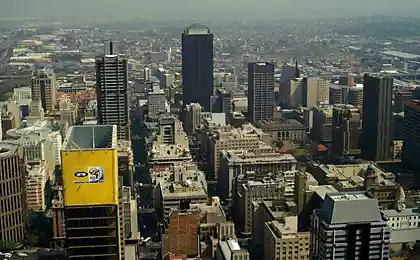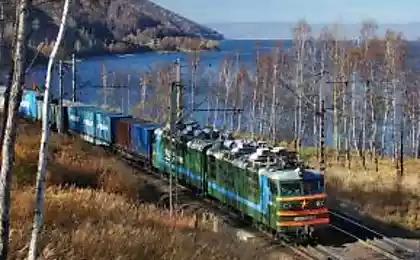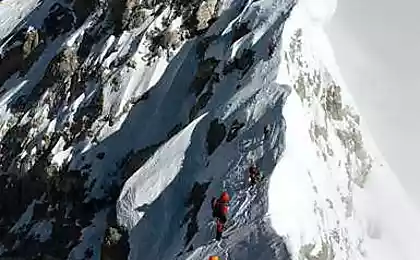974
The most unusual routes of South America
Pan-American Highway - the longest trail in the automotive world, the total length of 48,000 kilometers, connecting Alaska to Chile. It has good coverage, crosses a large number of countries and has a lot of other benefits. However, if you want to see the real South America, you need to leave the smooth asphalt on one of these legendary routes.
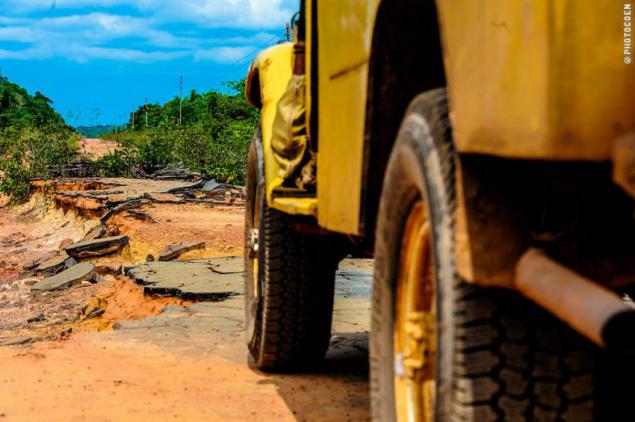
North Yungas road or the road of death, Bolivia
It is considered the most dangerous road in the world. The route partially runs along the edge of a cliff at an altitude of 600 meters, without any barriers. Almost all over the road, its width is less than 3 and a half meters, which presents great difficulties for a passing oncoming vehicles. Especially in the rainy season, when the already dangerous road turns into a fatal attraction. Now the road death is used mainly for tourism purposes, as the newly opened bypass route.

Transamazonskaya highway, Brazil
Most major highways of the country, the length of 5, 5 thousand kilometers. The road was built in 1970 with the aim to connect the remote regions of the Amazon to the center of the country. During the rainy season of the roads become impassable when the dust and dirt on the unpaved areas are transformed into reddish clay porridge and bridges and all washes.

Carretera Austral or Southern road, Chile
The only highway connecting the north and south of the country. Over 600 kilometers of the gravel road winds between the volcanoes, rainforests, fjords and glaciers. An ideal route for a dive into the wild in South America. The road was built during the reign of Pinochet.
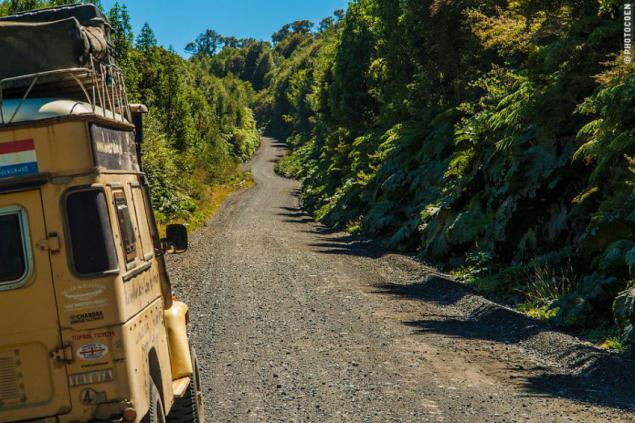
№9 road or highway Trans-Chaco, Paraguay
It passes through the sparsely populated, with a hot tropical regions, semi-desert landscape of the Gran Chaco. For a long time considered the worst and most unpredictable way in South America. In these places live Mennonites - descendants of radical representatives of Protestant, followed back in 1543 for their spiritual leader, Menno Simons, whose activities in the Netherlands, has been outlawed. Mennonites believe modern world is the kingdom of Satan and try to make contact with them to a minimum, are principled pacifists, appreciate the life path of moral self-improvement, baptize only adults and lead a humble life, trying to open up a simple daily work. Some Mennonite commune you can visit, but you must first obtain a permit.
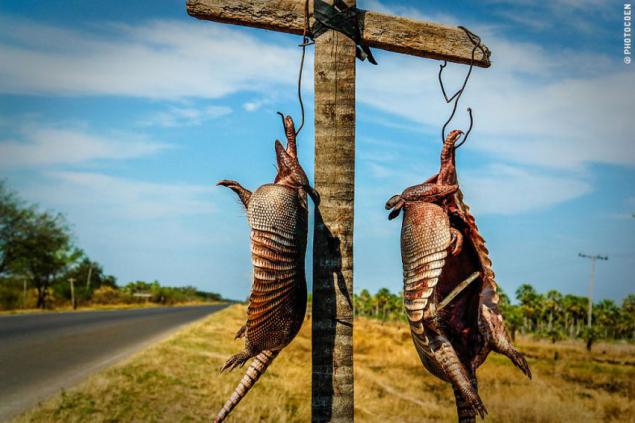
Ruta 40 or the National Road №40, Argentina
This legendary Argentine road, built in 1935, runs along the western border of Argentina. It starts in the south at the end of Tierra del Fuego and in the north near the border with Bolivia, passing along the Andean ridge and crossing the 20 national parks, 18 major rivers and 236 bridges, 13 major lakes and salt marshes. Ruta 40 passes through 27 mountain passes, one of which reaches a height of 5000 meters.

BR-319, Brazil
Another Brazilian road, built with the purpose of development of the Amazon. Due to lack of sufficient knowledge about the region, the road was laid on marshland, which affected its quality. In the rainy season the road washes out whole sections with bridges. However, in the dry season may be the way to go. The most persistent adventurers overcome the 800-kilometer road in about a week.

Salar de Uyuni, Bolivia
It is a vast expanse of dry salt with a very smooth surface on which to set the world speed records. Of course, this is not the road to a full sense of the word, but you can ride on it, and it's worth it. In the Salar de Uyuni exist organized tours, but you can come on their own. But do not forget that the plateau is located at an altitude of 3800 meters.

Everglades Pantanal, Brazil
Pantanal - a vast marshy area in the southwest of Brazil, attracts tourists the opportunity to plunge into the rich world of wildlife in South America. It is home to 120 species of mammals, 200 species of fish, 100 different species of reptiles and 600 species of birds. The roads are mostly unpaved, so movement needs all-wheel drive car.

Interoceanic Highway (Interoceanic Highway), connecting the Atlantic coast of Brazil, and the Pacific coast of Peru
This multi-billion dollar road was designed to spur the economic development of Peru and Brasil open access to the Pacific Ocean. Construction of the road is still going on, although the official opening took place in 2011. This is the easiest route listed in this post, and the only fully asphalted.

Source: markych.livejournal.com

North Yungas road or the road of death, Bolivia
It is considered the most dangerous road in the world. The route partially runs along the edge of a cliff at an altitude of 600 meters, without any barriers. Almost all over the road, its width is less than 3 and a half meters, which presents great difficulties for a passing oncoming vehicles. Especially in the rainy season, when the already dangerous road turns into a fatal attraction. Now the road death is used mainly for tourism purposes, as the newly opened bypass route.

Transamazonskaya highway, Brazil
Most major highways of the country, the length of 5, 5 thousand kilometers. The road was built in 1970 with the aim to connect the remote regions of the Amazon to the center of the country. During the rainy season of the roads become impassable when the dust and dirt on the unpaved areas are transformed into reddish clay porridge and bridges and all washes.

Carretera Austral or Southern road, Chile
The only highway connecting the north and south of the country. Over 600 kilometers of the gravel road winds between the volcanoes, rainforests, fjords and glaciers. An ideal route for a dive into the wild in South America. The road was built during the reign of Pinochet.

№9 road or highway Trans-Chaco, Paraguay
It passes through the sparsely populated, with a hot tropical regions, semi-desert landscape of the Gran Chaco. For a long time considered the worst and most unpredictable way in South America. In these places live Mennonites - descendants of radical representatives of Protestant, followed back in 1543 for their spiritual leader, Menno Simons, whose activities in the Netherlands, has been outlawed. Mennonites believe modern world is the kingdom of Satan and try to make contact with them to a minimum, are principled pacifists, appreciate the life path of moral self-improvement, baptize only adults and lead a humble life, trying to open up a simple daily work. Some Mennonite commune you can visit, but you must first obtain a permit.

Ruta 40 or the National Road №40, Argentina
This legendary Argentine road, built in 1935, runs along the western border of Argentina. It starts in the south at the end of Tierra del Fuego and in the north near the border with Bolivia, passing along the Andean ridge and crossing the 20 national parks, 18 major rivers and 236 bridges, 13 major lakes and salt marshes. Ruta 40 passes through 27 mountain passes, one of which reaches a height of 5000 meters.

BR-319, Brazil
Another Brazilian road, built with the purpose of development of the Amazon. Due to lack of sufficient knowledge about the region, the road was laid on marshland, which affected its quality. In the rainy season the road washes out whole sections with bridges. However, in the dry season may be the way to go. The most persistent adventurers overcome the 800-kilometer road in about a week.

Salar de Uyuni, Bolivia
It is a vast expanse of dry salt with a very smooth surface on which to set the world speed records. Of course, this is not the road to a full sense of the word, but you can ride on it, and it's worth it. In the Salar de Uyuni exist organized tours, but you can come on their own. But do not forget that the plateau is located at an altitude of 3800 meters.

Everglades Pantanal, Brazil
Pantanal - a vast marshy area in the southwest of Brazil, attracts tourists the opportunity to plunge into the rich world of wildlife in South America. It is home to 120 species of mammals, 200 species of fish, 100 different species of reptiles and 600 species of birds. The roads are mostly unpaved, so movement needs all-wheel drive car.

Interoceanic Highway (Interoceanic Highway), connecting the Atlantic coast of Brazil, and the Pacific coast of Peru
This multi-billion dollar road was designed to spur the economic development of Peru and Brasil open access to the Pacific Ocean. Construction of the road is still going on, although the official opening took place in 2011. This is the easiest route listed in this post, and the only fully asphalted.

Source: markych.livejournal.com














